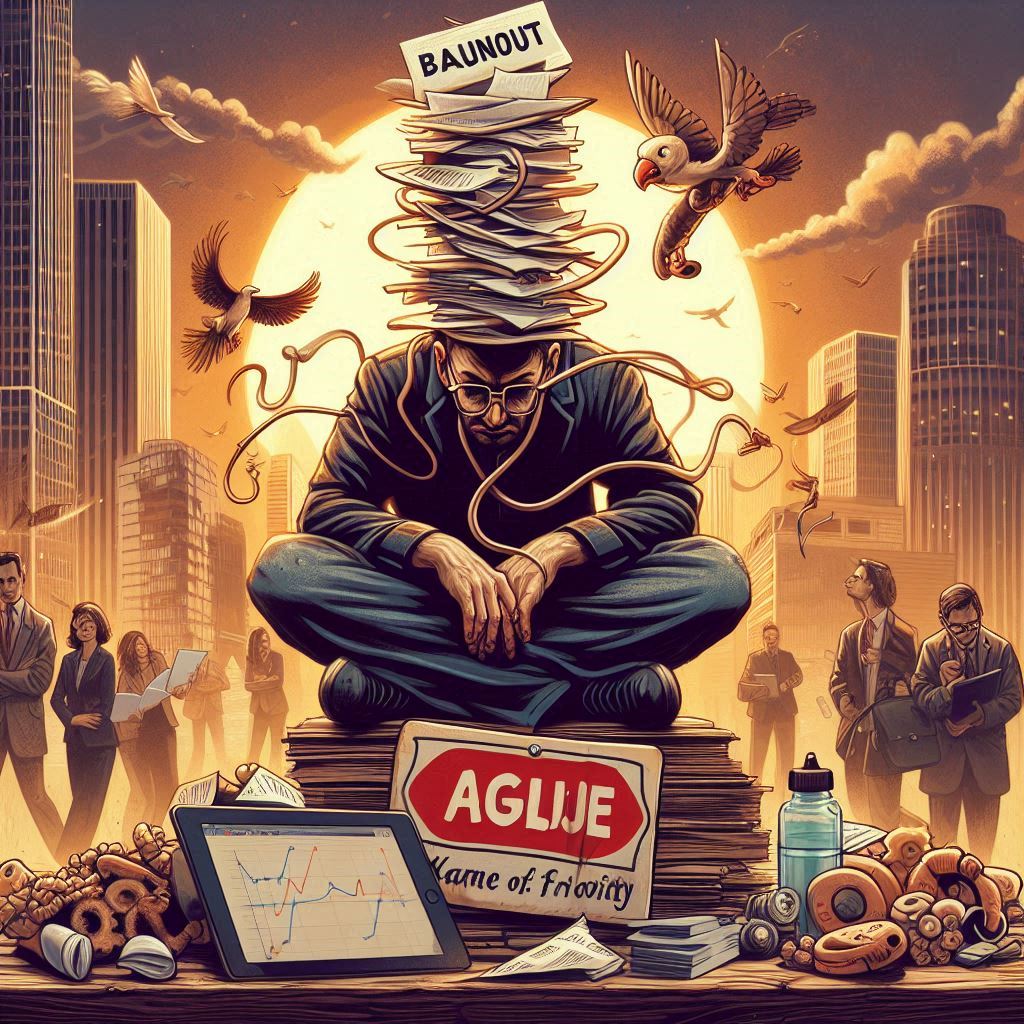The emotional toll of Agile: burnout in the name of agility
There is no doubt that over the last few years, Agile methodologies have gained prominence as a means to foster flexibility, innovation, and responsiveness to change. However, beneath the surface of this seemingly effective approach lies a troubling reality: the emotional toll it can take on teams. This article delves into the impact of Agile practices on team morale and well-being, particularly regarding constant iterations and pressure to deliver, exploring how the very principles intended to enhance productivity can inadvertently lead to burnout.
Understanding Agile: a double-edged sword
Agile practices prioritize iterative development, continuous feedback, and collaborative teamwork. On paper, these elements promote a dynamic work environment that encourages creativity and adaptability. Teams are empowered to experiment, pivot, and respond swiftly to customer needs. However, the relentless cycle of iterations, coupled with the expectation of constant delivery, can create a high-pressure atmosphere that strains team morale and emotional well-being.

The constant cycle of iteration
At the heart of Agile is the concept of iterative cycles—sprints that require teams to deliver incremental value within short timeframes. While this method enables quick responses to changing requirements, it also sets a relentless pace. Teams may find themselves caught in a continuous loop of planning, execution, review, and adjustment, leaving little room for reflection or recovery.
The emotional toll of this relentless cycle can manifest in several ways:
-
Increased Stress Levels: The pressure to meet tight deadlines and deliver high-quality work can lead to elevated stress levels among team members. The expectation of constant output can make individuals feel overwhelmed and anxious, particularly when faced with competing priorities.
-
Reduced Job Satisfaction: Continuous iterations may result in diminished job satisfaction. When team members feel they are perpetually “on the clock,” they may lose sight of the intrinsic value of their work, leading to disengagement and a decline in overall morale.
-
Erosion of Work-Life Balance: Agile’s focus on responsiveness can blur the lines between work and personal life. Team members may feel compelled to extend their work hours to keep up with demands, ultimately jeopardizing their work-life balance and well-being.
The pressure to deliver
The Agile philosophy encourages teams to prioritize customer needs and deliver value quickly. While this is essential for success, it can also create a culture of urgency that places undue pressure on team members. The fear of falling behind or disappointing stakeholders can lead to a toxic cycle of overwork and burnout.
Impacts of pressure on team morale
-
Fear of Failure: In an Agile environment, the fear of failure can be amplified by the fast-paced nature of work. Team members may become hesitant to take risks or voice concerns, fearing that any setback will reflect poorly on their performance.
-
Team Fragmentation: The pressure to deliver can lead to competition among team members rather than collaboration. When individuals are primarily focused on their own deliverables, the sense of teamwork and camaraderie may erode, resulting in a fragmented team dynamic.
-
Burnout: Perhaps the most concerning outcome of sustained pressure in an Agile context is burnout. Prolonged exposure to high-stress conditions can lead to physical and emotional exhaustion, cynicism, and a sense of inefficacy. This not only affects individual team members but can also have cascading effects on overall team productivity and performance.
Strategies for mitigating the emotional toll
Recognizing the potential for burnout in Agile teams is crucial for fostering a healthy work environment. Here are some strategies organizations can implement to mitigate the emotional toll:
-
Promote a Culture of Psychological Safety: Encouraging open communication and creating a safe space for team members to voice concerns can help alleviate the fear of failure. When individuals feel valued and heard, they are more likely to take risks and contribute meaningfully to the team.
-
Encourage Regular Breaks and Downtime: Organizations should emphasize the importance of work-life balance and encourage team members to take regular breaks. This can help individuals recharge and return to work with renewed energy and focus.
-
Set Realistic Expectations: While the Agile framework encourages responsiveness, organizations should strive to set realistic expectations for deliverables. Avoiding unrealistic deadlines and recognizing the limits of team capacity can help prevent burnout.
-
Foster Team Cohesion: Building strong interpersonal relationships among team members can enhance collaboration and support. Team-building activities, both in-person and virtual, can foster a sense of belonging and unity.
-
Conduct Regular Retrospectives: Regular retrospectives are a cornerstone of Agile practices. However, these sessions should focus not only on project outcomes but also on team well-being. Discussing emotional challenges and collectively brainstorming solutions can foster a supportive team environment.
Conclusion
While Agile methodologies offer numerous benefits for organizations, it is crucial to recognize the emotional toll they can exact on teams. The pressure to deliver, combined with the relentless cycle of iterations, can lead to burnout and negatively impact team morale. By prioritizing psychological safety, work-life balance, and realistic expectations, organizations can harness the full potential of Agile while safeguarding the well-being of their teams.
Ultimately, the goal should be to create a work environment where agility is not just about speed and efficiency but also about fostering a culture of well-being and collaboration—where teams can thrive without sacrificing their emotional health in the name of agility.
References
- Beck, K., et al. (2001). Manifesto for Agile Software Development. Agile Alliance.
- Goleman, D. (2013). Focus: The Hidden Driver of Excellence. HarperCollins.
- Maslach, C., & Leiter, M. P. (2016). Burnout at Work: A Psychological Perspective. Psychology Press.
- Sutherland, J., & Schwaber, K. (2017). The Scrum Guide: The Definitive Guide to Scrum: The Rules of the Game. Scrum.org.